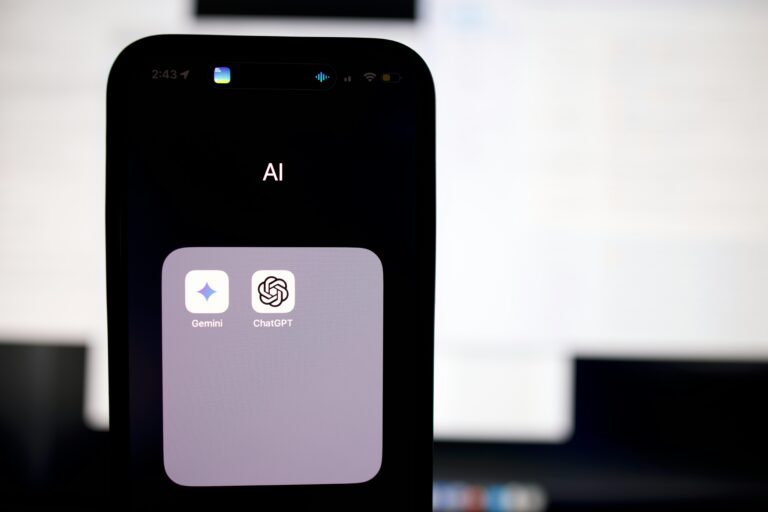AI is transforming both the way students learn and how educators deliver instruction, with algorithms playing a crucial role in this shift. From identifying common student errors to offering real-time feedback through AI-powered tools, educational algorithms are unlocking new possibilities for personalized and effective learning.
This article explores what algorithms are and outlines the primary steps and considerations for building your own educational algorithm.
What is an Algorithm?
An algorithm is a clearly defined sequence of steps used to perform a specific task. These can range from simple to complex. For example, a brute-force algorithm is one of the simplest types; it systematically tries every possible solution until it finds one that works. While this can be effective, it’s often inefficient for complex problems. In those cases, more sophisticated approaches like recursive algorithms are used, which solve a problem by breaking it down into smaller, more manageable subproblems.
Advanced algorithms like these are what power modern AI tools, including ChatGPT. These algorithms learn by identifying patterns, trends, and relationships in data. The data itself can be raw (unprocessed) or labeled (tagged with context). Platforms like Grammarly use this process, for instance, to analyze your writing and suggest improvements in real-time.
Regardless of their complexity, all algorithms share a core process: they take an input, perform a set of operations, and produce a final output.
Building Responsible, Effective Educational Algorithms
Creating an algorithm can seem complex, especially without a technical background. However, by breaking the process into manageable steps and understanding some core principles, algorithm development becomes more approachable.
It is important to keep in mind that every step in this development process must be grounded in a commitment to educational fairness and effectiveness. An algorithm designed for schools directly impacts students and teachers. Therefore, the goal is always to create a tool that not only performs reliably but also serves as a responsible, ethical, and equitable support system for the core mission of teaching and learning.
Define the Goal, Inputs, and Outputs
Before writing any code, you need to have a clear understanding of the goal you want your algorithm to achieve. This crucial first step involves thoroughly defining two things: the purpose of the algorithm and the specific data it will use.
Define the Goal and its Outputs
Your first task is to define the goal in detail and specify the output or result that fulfills that goal. A well-defined goal is the foundation of an effective algorithm. For example, the goal might be to:
- Summarize student performance: The algorithm’s output would be a descriptive summary of past quiz scores.
- Forecast future test scores: The algorithm’s output would be a predictive estimation of what a student might score on an upcoming exam.
- Recommend review materials: The algorithm’s output would be a prescriptive list of resources for a struggling student.
A critical part of defining the goal in an educational context is establishing its pedagogical soundness. The algorithm should support established educational goals and align with relevant standards at the classroom, school, or district level to ensure it is useful and truly enhances learning.
Before writing any code, you need to have a clear understanding of the goal you want your algorithm to achieve. This crucial first step involves thoroughly defining two things: the purpose of the algorithm and the specific data it will use.
Understanding the desired output helps you design the precise steps the algorithm must take to achieve it.
Define the Inputs
Next, determine what specific data your algorithm will need. The quality, size, and structure of this data can significantly influence how well your algorithm performs.
- Relevance: Make sure the data is directly related to your algorithm’s goal.
- Data Preparation: If you’re using an existing dataset, you must understand how it was collected, structured, and evaluated. If you’re building your own, you’ll need to define a clear process for gathering, structuring, and storing it.
- Validation: It’s essential to check your data for errors. This includes verifying that values are within a valid range, that there are no duplicate entries, and that the data is consistently formatted.
- Representative and Safe Data: A critical consideration is ensuring your training data is representative and safe:
- Demographic Representation: The data must accurately reflect the diversity of the student population the algorithm will serve, including factors like race, ethnicity, gender, and disability status. Data that is skewed or unrepresentative can lead to biased and unfair outputs. Check for representation gaps to make sure underrepresented groups are adequately included to avoid reinforcing inequities.
- Data Safety: The data must also protect student privacy by removing Personally Identifiable Information (PII) or anonymizing the data so it cannot expose individual identities.
Design the algorithm
Now that you’ve defined your goal, inputs, and outputs, it’s time to map out the logic. Think of this as creating a blueprint for your algorithm. Before writing any code, it can be helpful to use tools like flowcharts or diagrams (such as those from draw.io) to visually lay out the steps. You can also use pseudocode, which is a simple way of writing out the logic in plain English, to help visualize the process.
Next, you need to select the algorithm that’s best for your goal. You can choose to use a single algorithm or an ensemble of algorithms. An ensemble combines the results of multiple models to improve performance. Think of an ensemble as a team of experts: instead of relying on one algorithm’s “opinion,” you combine the results from several to get a more accurate and reliable outcome. This is especially useful for complex problems.
The process of selecting an algorithm can be as simple as thinking through the problem and the data you defined in Step 1. For more complex challenges, you might need to test and compare different models to find the one that performs best for your specific needs. The goal is always to choose the approach that will most effectively achieve the desired output, while considering resource constraints and technical feasibility.
You need to select the algorithm that's best for your goal. You can choose to use a single algorithm or an ensemble of algorithms. An ensemble combines the results of multiple models to improve performance. Think of an ensemble as a team of experts: instead of relying on one algorithm's "opinion," you combine the results from several to get a more accurate and reliable outcome.
You may even want to consider engaging the end-user in this process which could be the educator. Consulting with teachers can help you choose the most effective algorithm by clarifying exactly how the tool will be used in the classroom.
For instance, a team might initially plan for an algorithm that can flag struggling students and automatically assign an intervention. A teacher, however, may clarify that they need a tool that only flags high-priority students, allowing the teacher to manually review and assign the interventions themselves. This input moves the design away from a fully automated system and toward a transparent, supporting tool, ensuring the technology augments the educator’s work rather than dictating it.
Create the algorithm
Once you have a clear blueprint, and the pedagogical purpose is established, you’re ready to start building. This is where you translate your design into a language the computer can understand. You’ll use a programming language to write the actual code for your algorithm.
When choosing a language, consider these factors:
- Popularity and Support: Languages with a large, active community, like Python, Java, or R, often have extensive resources, documentation, and forums. This means you’re more likely to find help if you run into a problem.
- Expertise: It’s often best to choose a language your team is already comfortable with. This reduces the learning curve and allows for more efficient development.
- Performance: Different languages are better suited for specific tasks. Your language choice will be significantly influenced by the end environment where the algorithm will run.
- For example, if your algorithm is designed to power a real-time education website or dashboard, you might select JavaScript.
- If the algorithm is for data science or machine learning, Python is a preferred choice.
- If you are building a mobile learning application, languages like Swift or Kotlin may be chosen for this.
Once you have a clear blueprint, and the pedagogical purpose is established, you're ready to start building. This is where you translate your design into a language the computer can understand. You'll use a programming language to write the actual code for your algorithm.
Depending on your algorithm’s complexity, you’ll likely use specialized software to help with the development. An IDE (Integrated Development Environment), like JupyterLab or IntelliJ, helps to streamline the coding process. Additionally, you may use modeling tools or frameworks like PyTorch, TensorFlow, or Keras. These are toolkits that provide pre-built functions and structures to help you efficiently construct and train your AI models.
Test and refine the algorithm
Once you’ve built your algorithm, the next crucial step is to test it thoroughly and systematically.
Key Testing Considerations
- Performance Metrics: To measure success, you’ll need to use performance metrics. These are quantitative measures that tell you how well the algorithm is meeting its goal. For example, if your algorithm is a predictor, metrics like accuracy and precision will tell you how many of its predictions were correct. The right metric depends on your original objective, and it may take some experimentation to determine which one best reflects the performance you care about most.
- Bias and Fairness: It’s essential to test your algorithm’s performance across different demographic groups to ensure it doesn’t produce biased or unfair outcomes.
- Efficiency: Efficiency refers to how much time, memory, and processing power your algorithm consumes. In education, this can relate to a school’s or district’s resource constraints and technical feasibility. Testing for efficiency involves monitoring factors like CPU/GPU usage and runtime to ensure the algorithm is practical and scalable. In other words, it should run quickly and smoothly, even as the size of the data increases. Many schools, especially in under-resourced areas, may lack access to high-speed internet or modern computers. Therefore, you need to ensure your model runs smoothly on devices with limited processing power or bandwidth. Consider developing lightweight versions or having offline functionality for environments with unstable internet connections.
Refining the Algorithm
If the results aren’t what you expected, it’s time to refine your approach. This often involves going back and making adjustments to the previous steps. Here are a few places to start:
- Reassess your metrics: The metrics you chose to measure success might not be the right ones for your specific goal.
- Try alternative approaches: The current algorithm or model you selected may not be the best fit for your task.
- Revisit the data: Go back to your data for potential issues, such as errors, missing information, or a lack of demographic representation.
After your algorithm has been rigorously tested and refined to meet your performance standards, it's time to deploy it. This is the process of integrating the algorithm into the real-world environment it was designed for, such as a web application, a mobile app, or an online dashboard.
Deploy and maintain the algorithm
After your algorithm has been rigorously tested and refined to meet your performance standards, it’s time to deploy it. This is the process of integrating the algorithm into the real-world environment it was designed for, such as a web application, a mobile app, or an online dashboard.
A major consideration before full deployment is accessibility and ease of use. An educational algorithm must be accessible to all users, including students and educators with varying levels of technical expertise or disabilities.
- User-Friendly Design: Interfaces should be intuitive and require minimal training for educators.
- Accessibility Features: Ensure compliance with accessibility standards so that students with disabilities can fully engage with the tool.
- Language and Literacy Considerations: Use clear, age-appropriate language and provide support for multilingual learners when applicable.
Once deployed, the work isn’t over. It’s essential to continuously monitor and maintain the algorithm to ensure it performs as expected over time. Factors like new data or updates to the operating environment can affect its performance. Monitoring helps you catch any issues early and make necessary adjustments.
By keeping key considerations in mind, you can start the process of developing your own educational algorithms that can enhance the learning experience. As educational technology continues to evolve, thoughtful algorithm design will be essential to ensuring these innovations effectively serve all students.

L Burleigh

Jules King





1 thought on “What to Know Before Creating an Educational Algorithm”
I don’t see discussion here of the efficiency of the algorithm in terms of learning gains, but rather in terms of computing power.
I suppose that the assessment of algorithms via educational metrics needs its own article.